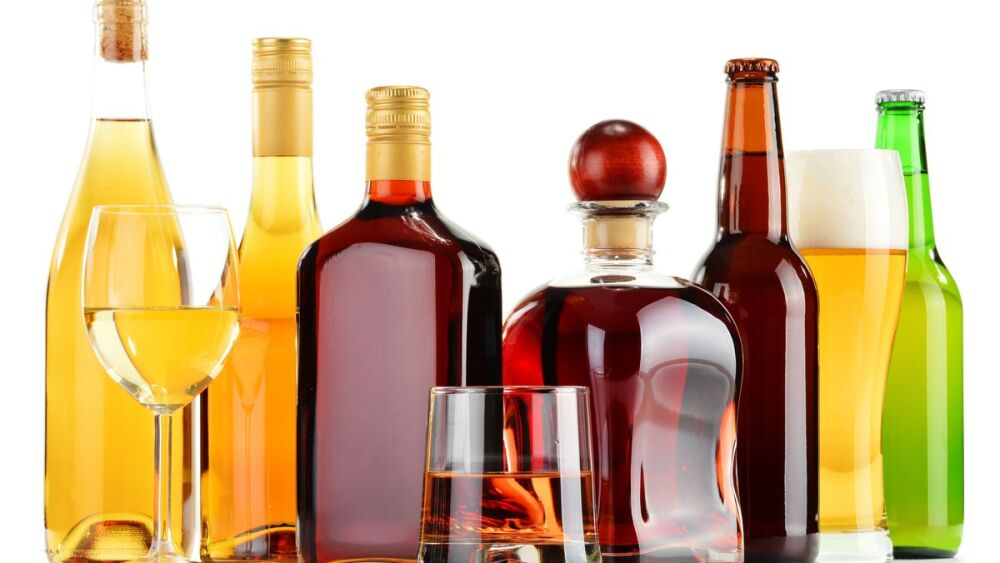Fill out the form on this page to download a checklist to measure whether you have a drinking problem.
It’s become such a cliché. The firefighter unwinding after a rough day by knocking back a few beers. The police officer stopping at the local “cop bar” to take the edge off after a critical incident. Corrections workers and EMTs pouring a drink to help them relax after a difficult shift. We see it in movies and on television, and we see it in our own departments and agencies.
Most people know at least one person who is a “functional alcoholic.” And anyone who works in public safety has undoubtedly had to deal with people who are significantly less than functional due to their alcohol use.
A 2021 Gallup poll showed that 60% of U.S. adults consume alcoholic beverages. It seems almost counter-intuitive, but this is actually a drop from 65% right before the pandemic, and also down from the high-water mark of 71% in the early 1980s.
According to the Centers for Disease Control (CDC), about 5% of U.S. adults—both men and women—regularly engage in heavy drinking, which is defined as “consumption of an average of more than 14 alcoholic drinks per week for men or more than 7 drinks per week for women in the past year.” It’s this number, more than the overall rate of drinkers, that is cause for concern.
Alcohol Is Killing Us
The United States has long struggled with the impacts of alcohol on society. From the passage of the 18th Amendment in 1919, which made Prohibition the law of the land, to the 1933 repeal of Prohibition and beyond, Americans have dealt with changing attitudes, legislation and regulations regarding the consumption of alcoholic beverages.
A recent article published in the Journal of the American Medical Association drew some sobering conclusions about the impact of alcohol use in the United States. In “Estimated Deaths Attributable to Excessive Alcohol Use Among US Adults Aged 20 to 64 Years, 2015 to 2019,” lead authors Marissa B. Esser, Gregory Leung and Adam Sherk concluded that “excessive alcohol consumption accounted for 12.9% of total deaths among adults aged 20 to 64 years and 20.3% of deaths among adults aged 20 to 49 years.”
This means that roughly one in eight deaths of adults 20 to 64 years old can be directly linked to drinking. Among those aged 20 to 49, the rate is closer to one in five. This puts alcohol-related illness and accident right up there with heart disease and cancer as a major contributor to mortality in the U.S. population.
Alcohol and First Responders
Which brings us back to alcohol use among first responders. According to the Yale School of Medicine, some of the major risk factors for developing an alcohol use disorder include:
- A family history of alcohol abuse
- Starting drinking at an early age
- A childhood history the includes a mood or conduct disorder
- Mental health issues, including depression or post-traumatic stress disorder (PTSD)
That last point may be the key. Since up to 80% of all first responders regularly experience on-the-job trauma, it should come as no surprise that people who work in public safety develop PTSD at higher-than-average rates. In fact, studies have shown PTSD impacts:
- 35% of police officers
- 18-24% of dispatchers
- 57% of firefighters
- 33% of EMT personnel
Of course, being at risk for PTSD—or even an actual diagnosis—does not guarantee that a person will develop an alcohol use disorder. Other factors, as well as professional and family support systems, combined with individual personalities, behaviors and genetics, are also major contributors.
Do I Have a Drinking Problem?
Not every person who drinks has a drinking problem, so it’s up to each individual to determine whether their own drinking might be out of control. A simple self-assessment can help. Thinking back to the previous 12 months, have you:
- Tried to stop or reduce your drinking, but were unable to do so?
- Consumed more alcohol or spent more time under the influence than you than you planned?
- Experienced physical discomfort or illness after a period of drinking?
- Felt strong cravings that compelled you to drink?
- Found your drinking interfered with your ability to participate in family, work or school activities?
- Scaled back your social time with family and friends, or other activities you enjoy, in order to drink?
- Found yourself engaging in physically dangerous activities—such as driving under the influence or having unsafe sex—because you had been drinking?
- Had periods of time you don’t remember (blackouts) due to over-consumption of alcohol?
- Found yourself drinking because of (or in spite of) feelings of depression or anxiety?
- Had a health problem directly related to your drinking?
- Needed to consume more alcohol than usual in order to get the same buzz?
- Experienced symptoms of withdrawal such as sleeplessness, anxiety, irritability, nausea after a period of drinking or when trying to stop drinking?
If you found yourself answering yes to any of these questions, you should consider further evaluating whether to change your personal pattern of alcohol consumption. In addition, if you know a co-worker or family member who needs help, consider approaching them in a safe, private setting and bringing up the topic in a way that is both nonconfrontational and free of judgment.
Getting Help
The good news is that we’ve come a long way as a society in developing resources for people who need help with their drinking. If you’re in a first responder role and find yourself needing help, you likely have multiple avenues for support.
Peer support team. If your agency has a peer support team, you can go to them for help. Most peer support teams operate under a policy of strict confidentiality, so you can be confident that your request will be kept private. Note: Cordico users can access their peer support team by tapping on the Peer Support link on the main Cordico screen.
Employee assistance program. Your agency may offer an employee assistance program (EAP) directly, or it may be a feature of your health plan. Most EAPs offer confidential, no-cost counselling and referrals for a variety of issues, including alcohol use disorders. Note: Cordico users can access their EAP through the Employee Assistance Program link on the main screen.
Therapists. Many public safety agencies offer therapy services to employees who need it, though many first responders are understandably hesitant to ask for help from in-house and affiliated providers due to worries about revealing personal struggles to your employer. You may be able to get a referral through your agency’s EAP, or recommendations from friends and co-workers. If your agency offers a check-in program with the option of follow-up therapy sessions, you’ve got the perfect setup for getting help.
Alcoholics Anonymous (AA). The original 12-step program, Alcoholics Anonymous has provided support for millions of people worldwide who want to overcome their addictions and live a sober life. Depending on where you live, you may even find there’s an AA group composed of first responders like yourself. (Many people feel more comfortable working through their issues with peers with similar challenges.) It just takes some asking around. You can get more information by visiting aa.org.
Cordico. If your agency uses Lexipol’s Cordico wellness app, you have even more resources to get help. The app’s new alcohol module provides a wealth of information about how drinking impacts your physical and mental well-being, and how you can moderate your alcohol intake to prevent overuse.
Of course, the tried-and-true rules about addiction are still very much a factor. The most important step to solving the problem of excessive alcohol consumption is to recognize that the problem exists in the first place. The next requirement is a willingness to get better. After that, it’s up to you and your support structure to make the necessary changes to either moderate or eliminate your alcohol use and regain control of your sobriety.
This article was originally posted Dec. 2, 2022. It has been updated.
Fill out the form on this page to download a checklist to measure whether you have a drinking problem and share it with your colleagues, family and friends.













